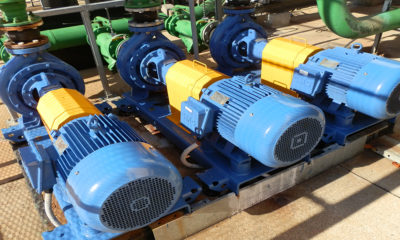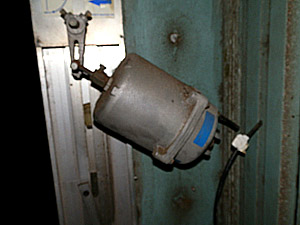
- Home
- Case Studies
- Fifty Percent Energy Reduction in Half a Day
Fifty Percent Energy Reduction in Twenty Minutes
How we halved a client’s energy bill after being 20 minutes on site
A brief description of the Site
How did we achieve this Fifty Percent Energy Reduction?
The site is a typical suburban shopping centre, with two key or anchor tenants and a selection of Specialty shops. The centre also and a selection of eateries. The Site was circa 10,000 square meters in area, so not huge.
However, the site was one of a larger portfolio,. When compared to other shopping centres of a similar size and demographic, this site was found to be performing poorly in terms of energy consumption.
The energy consumed was nearly double that of a comparable site, and our client wanted o know why
The initial Problem
The Center was consuming almost twice the amount of energy compared to another in the portfolio of a similar size and demographic.
The first question is ” are the operating hours the same?” and the answer was a resounding yes, 12 hours a day 7 days a week.
Given the centres were within 100 kilometres of each other, given the floor size was very similar and the layout was similar, it was clear that an amount of 2 x the energy spent seemed too high.
An Asset Register and HVAC Mechanical Services Audit
We made our case and offered an audit of the mechanical services and built an asset register of the same while we were there. We are inspecting and checking these items, so why not be more though and deliver more “bang for your buck”.
Condenser Water Pumops

The Building Management System(BMS)
One of the first things we discovered was the BMS was very old in technology, yet it was only installed less than ten years ago.
In testing, we found it did very little; in fact, we could not even start stopping the Air handling units from this BMS. This was our first clue as to why the energy at this site was twice that of the other comparable site.
Mechanical Services Switchboard
Upon Investigation of the Mechanical services switchboard, we found everything had been turned to the manual, so the entire site’s common air conditioning was running 24/7 instead of 12/7 as per the time-clocks of the BMS.
Here is the problem!
We Tested the Entire Building Management System(BMS)
Our logic was that this was done for a reason, there is a mechanical services maintenance agreement active on the site with monthly visits, so this is not something we would expect to find as “normal”, there had to be more to it.
We made some calls to the incumbent mechanical services vendor to gain some insight into their decisions. With answers which were not satisfactory, we turned everything back to auto and tested every output of the BMS to be 100 per cent certain.
We effectively recommissioned the Building Management System.
There were some faults, but there were no BMS faults that would warrant such a large energy reduction as turning the auto / off / Manual switches back to Auto to make the site run 12 hours per day instead of 24 hours per day
No Fault Found
In controlling the stop/start of the Air Handling Units, we found no fault in the BMS Controls. We could not ascertain a reason for turning the “AOM” switch to manual and making the site run 24/7.
The information was noted with our client with the date of the change. This meant the energy reduction could be seen in the cost of the monthly energy bill from the retailer.
There were still other work to complete, and we returned to the site the next day to do further checks and continue with the mechanical services and maintenance audit and, the mechanical services asset register.
We contacted the mechanical services vendor for comment and their input into what we had found. The attitude was not entirely helpful.
Mechanical Services Audit
Change thiPneumatic Actuator on the Economy Dampers

The Energy Bill Halved | Fifty Percent Energy Reduction
We noted the date of this change to the Auto / Off / Manual switches on the mechanical switchboard. Consequently, making the site run for 12 hours a day instead of 24 hours a day. Thereby ensuring our client was aware of this date for their own verification purposes.
We asked the date be noted and the next energy bill, be at least 30 days post this date, so we can justify our efforts and gain an understanding of the relative return on investment.
The Energy Bill was nearly halved, an energy reduction of nearly 50%, ongoing, investigated and resolved effectively within four hours of being on-site.
What Were the Actual savings
Our invoice, including the full Mechanical services asset register, maintenance audit and recommissioning the BMS, was circa $9000. The energy Bill was typically around $20,000 per month, which we almost halved to Circa $11,000 per month.
Our services were effectively free.
it wasn’t all good news
The Mechanical Services Agent
We did what we could to include views from the incumbent mechanical services crew. We wrote our report with the view they would read the report also and hopefully gain some insight from it.
They were terminated about six months later.
( FYI – moving forward, we did not bid or even request to bid on the mechanical services for this site)
(Those of you who are reading this and have technical knowledge, please remember this site had a Preventative Maintenance Agreement with a Mechanical Services provider with a monthly attendance for at least 8 hours).
Would Like to Learn More, How can we Help with your Building?
Links
Contact Us
Sydney
02 9091 8009
Melbourne
03 9982 4414
National (24/7, 365 days)
1300 920 752
Can we Help you Today
info@forteas.com.au
1300 920 752
0439 402 599
Sydney, Melbourne & Canberra
Greater Sydney, Parramatta, Penrith, Blue Mountains, Central Coast, Newcastle, Wollongong, Dubbo, and others
greater Canberra
Greater Melbourne, Casey, Stonnington, Ballarat, Wodonga, and others

